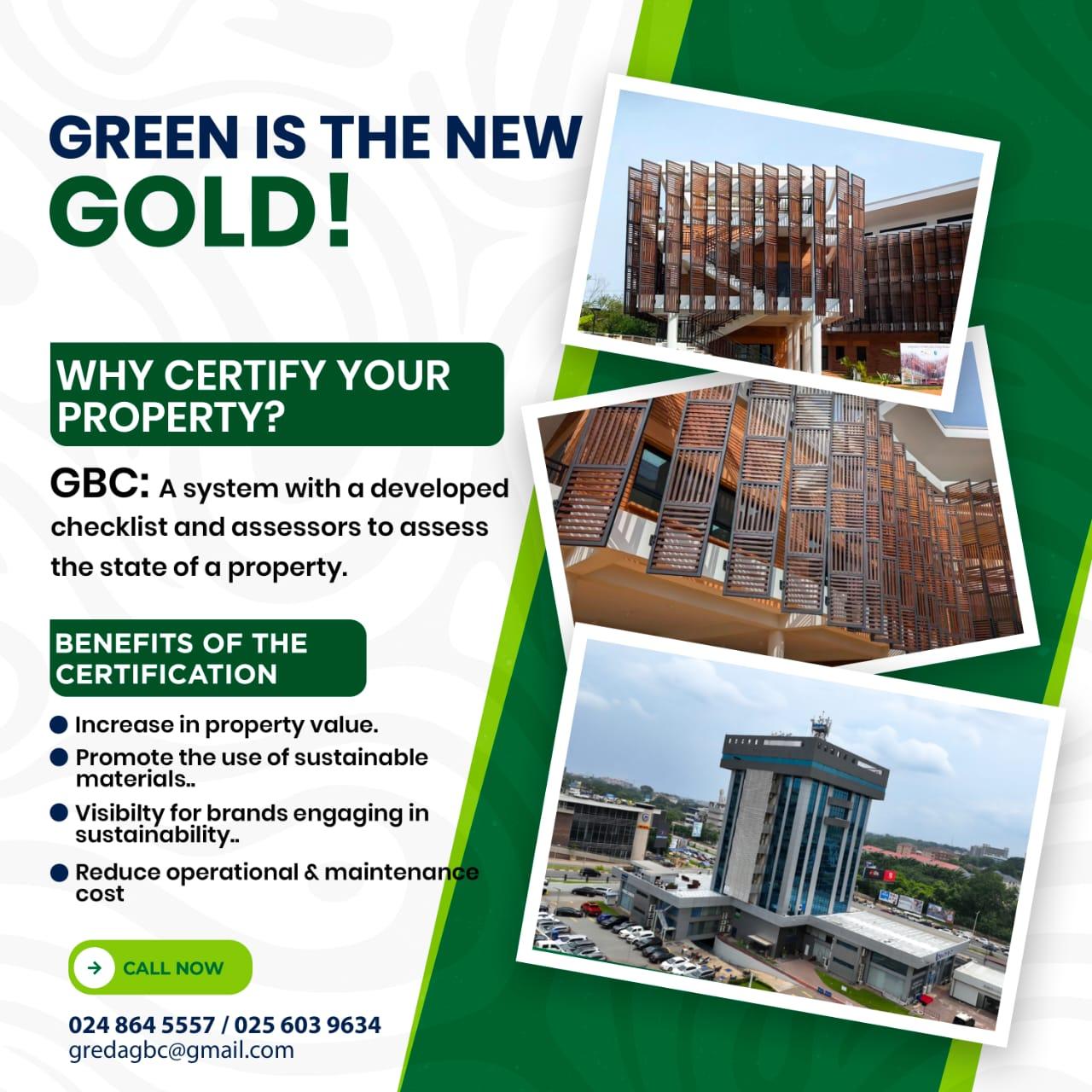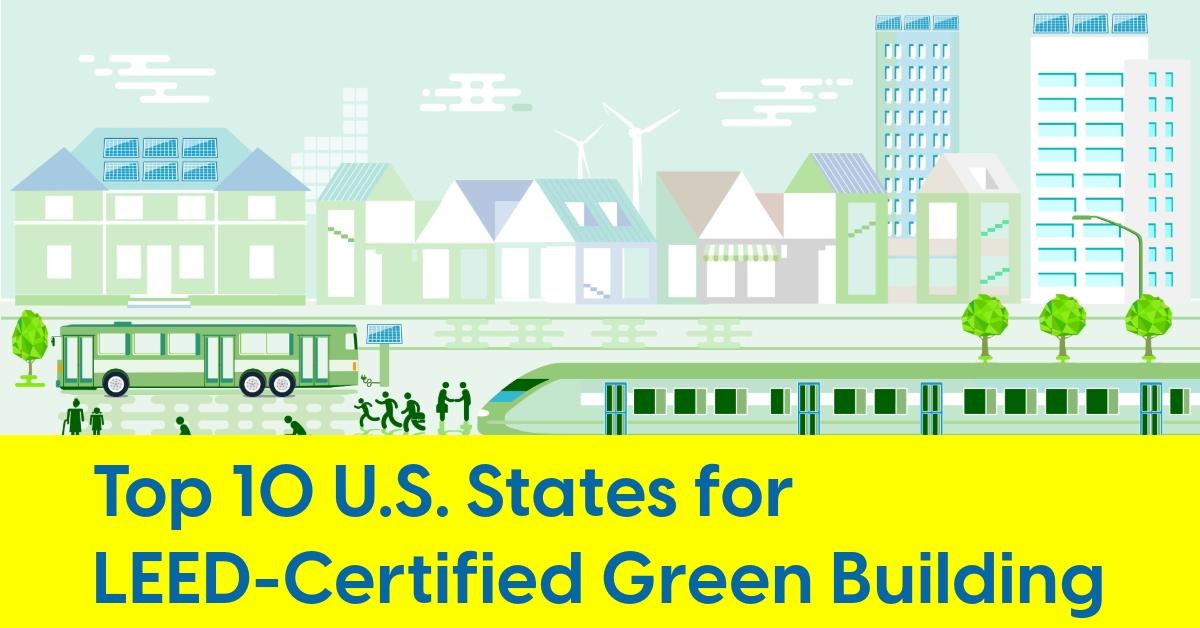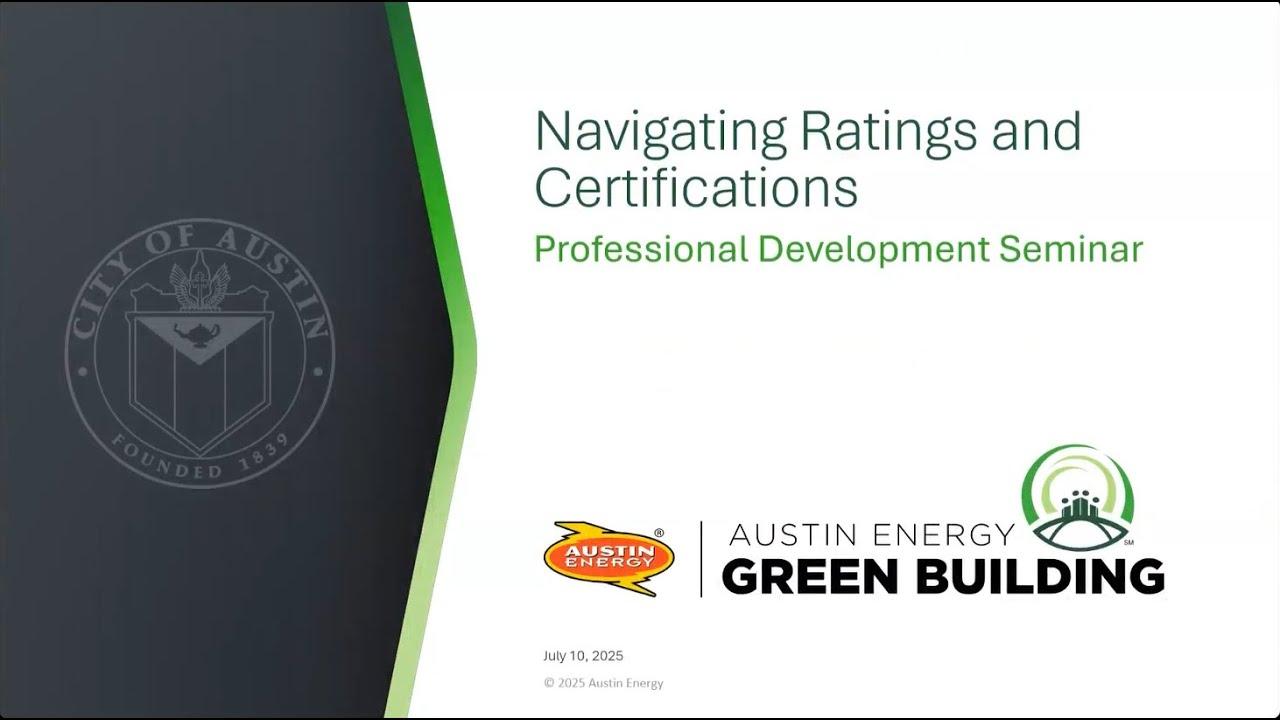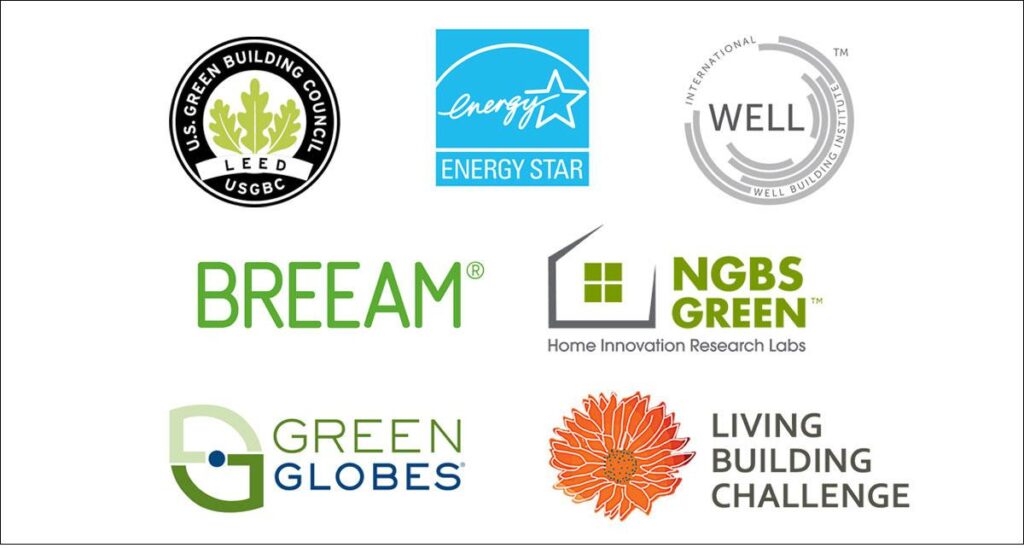As the world steadily shifts toward sustainability, the real estate landscape is evolving in tandem, with green building certifications emerging as pivotal markers of environmental responsibility and energy efficiency. In 2025, buyers are not just looking for a roof over their heads-they are seeking homes and commercial spaces that reflect a commitment to the planet’s future. Navigating this growing array of certifications can be daunting, yet understanding which credentials carry the most weight is essential for making informed decisions. This article unpacks the green building certifications buyers prioritize in 2025, shedding light on what they signify and why they matter in today’s eco-conscious market.
Table of Contents
- Green Building Certifications Shaping Sustainable Real Estate Trends
- Understanding the Criteria Behind Top Green Certifications
- Evaluating Certification Benefits for Long-Term Property Value
- Key Recommendations for Navigating Certification Choices
- Future-Proofing Investments with Emerging Green Standards
- Frequently Asked Questions
- In Summary
Green Building Certifications Shaping Sustainable Real Estate Trends
As the real estate market evolves, buyers are becoming increasingly discerning about the environmental impact and energy efficiency of their potential investments. Certifications act as trusted benchmarks, signaling that a property not only meets but exceeds sustainability standards. Leading certifications such as LEED, BREEAM, and WELL have gained prominence for their comprehensive evaluation of buildings’ environmental, social, and health impacts.
These certifications assess a spectrum of factors including energy consumption, water efficiency, indoor air quality, and material sourcing. For instance, LEED (Leadership in Energy and Environmental Design) emphasizes reducing a building’s carbon footprint through innovative design and construction practices. Meanwhile, WELL focuses primarily on the occupants’ health and well-being, making it a popular choice for residential and commercial properties alike. Buyers in 2025 are gravitating towards properties that demonstrate commitment to both ecological responsibility and human-centric design.
To better understand how these certifications compare, consider the following simplified overview:
| Certification | Focus Area | Key Benefit |
|---|---|---|
| LEED | Energy & Environment | Carbon footprint reduction |
| BREEAM | Sustainability & Performance | Holistic building evaluation |
| WELL | Occupant Health & Wellness | Enhanced indoor environment |
Buyers also seek certifications that offer:
- Verified energy savings and lower utility costs
- Integration of renewable energy sources
- Use of sustainable and non-toxic materials
- Enhanced resilience against climate-related risks
- Transparency through third-party audits and documentation
As these certifications become mainstream, they are shaping not just the aesthetics but the very fabric of how sustainable real estate is conceived and valued. For buyers, these labels translate to long-term savings, healthier living spaces, and properties that hold their value well into the future.

Understanding the Criteria Behind Top Green Certifications
When evaluating green building certifications, buyers prioritize criteria that balance environmental impact, occupant health, and long-term savings. At the heart of these certifications lies a rigorous assessment of energy efficiency, water conservation, and sustainable material use. Buyers seek assurances that a building not only reduces its ecological footprint but also fosters a healthy indoor environment through superior air quality and natural lighting.
Performance metrics are pivotal, focusing on measurable outcomes rather than just design intentions. These include:
- Energy consumption reduction percentages
- Water usage benchmarks
- Waste diversion rates during construction and operation
- Indoor air pollutant levels
Beyond numbers, transparency in documentation and third-party verification adds credibility. Certifications that demand ongoing monitoring and reporting encourage continuous improvement, ensuring buildings maintain their green status over time. This dynamic approach appeals to buyers interested in future-proof investments that adapt to evolving environmental standards.
| Certification | Key Criteria | Verification |
|---|---|---|
| LEED | Energy use, water efficiency, materials | Third-party audit |
| WELL | Indoor air quality, occupant health | Continuous performance tracking |
| BREEAM | Environmental impact, innovation | Independent certification body |
Evaluating Certification Benefits for Long-Term Property Value
When it comes to securing long-term value, green building certifications serve as more than just badges of environmental responsibility-they act as strategic investments. Buyers increasingly recognize that properties with verified sustainability credentials often command higher resale prices and experience faster market absorption. These certifications signal quality construction, energy efficiency, and healthier living environments, all factors that contribute to enduring appeal.
Beyond initial cost savings, certified buildings typically demonstrate reduced operational expenses through lower utility bills and maintenance costs. This economic advantage not only enhances monthly cash flow but also fortifies the property’s value proposition over time. In addition, many lenders and insurers offer preferential terms for certified buildings, further elevating their attractiveness in the real estate market.
Several certifications also include rigorous standards for materials durability and indoor air quality, elements that minimize long-term repair needs and support occupant well-being. These features resonate strongly with buyers prioritizing wellness and sustainability, making certified properties stand out in competitive markets.
- Higher resale values due to market demand
- Lower operational costs enhancing investment returns
- Improved financing conditions from lenders recognizing reduced risks
- Enhanced occupant health and satisfaction driving tenant retention
| Certification | Resale Value Increase | Typical Energy Savings | Average Payback Period |
|---|---|---|---|
| LEED | 8-12% | 15-25% | 5-7 years |
| WELL | 6-10% | 10-20% | 6-8 years |
| BREEAM | 7-11% | 12-22% | 5-6 years |
| Passive House | 10-15% | 30-50% | 4-6 years |

Key Recommendations for Navigating Certification Choices
Choosing the right green building certification can feel like navigating a complex maze. To simplify your decision-making process, focus on certifications that align closely with your project’s goals, budget, and geographic location. Some certifications prioritize energy efficiency, while others emphasize materials sourcing or water conservation-knowing your priorities upfront can save time and resources.
Consider the following strategic approaches:
- Project Scale & Scope: Smaller projects might benefit from streamlined certifications, whereas large-scale developments could leverage comprehensive multi-criteria certifications.
- Local Relevance: Certifications recognized or incentivized by local governments often carry added value for permitting and funding.
- Long-term Sustainability: Look beyond initial certification and assess how ongoing compliance requirements impact operational costs.
Understanding the nuances of each certification’s focus areas will empower buyers to make informed choices. For example, a certification emphasizing indoor environmental quality could appeal to health-conscious developers, while others focusing on carbon footprint reduction might resonate with environmentally driven stakeholders.
| Certification | Best For | Key Feature |
|---|---|---|
| LEED v4.1 | All project sizes | Comprehensive sustainability metrics |
| WELL Building Standard | Health & wellness focused | Indoor air quality & occupant comfort |
| BREEAM | European & global projects | Environmental impact across lifecycle |
| Living Building Challenge | Net positive projects | Regenerative design principles |

Future-Proofing Investments with Emerging Green Standards
As sustainability evolves from niche to necessity, investors are increasingly prioritizing properties that align with the latest environmental benchmarks. Emerging green standards are not just regulatory checkboxes; they represent a strategic approach to safeguarding asset value against future environmental risks and market shifts. By integrating these advanced certifications early, buyers mitigate potential compliance costs and enhance long-term returns.
Embracing innovation in certification criteria means considering factors beyond traditional energy efficiency-such as water stewardship, circular material usage, and occupant health metrics. These dimensions are reshaping how buildings are evaluated and valued, creating a new paradigm where resilience and adaptability become key investment criteria.
Investors should also be aware of the growing emphasis on digital transparency and real-time performance monitoring embedded in emerging standards. Buildings equipped with smart systems that continuously report environmental data not only foster trust but also enable dynamic management strategies that can adjust to changing climate conditions or regulatory landscapes.
- Proactive compliance: Meeting or exceeding standards ahead of mandates
- Market differentiation: Standing out with verified green performance
- Risk reduction: Minimizing exposure to future carbon pricing or penalties
- Enhanced liquidity: Attracting a broader pool of eco-conscious buyers
| Green Standard | Key Feature | Investor Benefit |
|---|---|---|
| LEED v5 | Carbon footprint tracking | Transparency & risk management |
| WELL v3 | Health-focused design metrics | Higher tenant satisfaction |
| Living Building Challenge | Net positive energy and water | Long-term sustainability leadership |
Frequently Asked Questions
Q: What are green building certifications, and why do they matter in 2025?
A: Green building certifications are standardized benchmarks that assess the environmental performance and sustainability of buildings. In 2025, they matter more than ever as buyers prioritize energy efficiency, reduced carbon footprints, and healthier living spaces amid growing climate concerns and regulatory pressures.
Q: Which green building certifications are buyers most interested in for 2025?
A: The top certifications gaining traction include LEED (Leadership in Energy and Environmental Design), WELL Building Standard, BREEAM (Building Research Establishment Environmental Assessment Method), and the Living Building Challenge. Each offers unique criteria focusing on sustainability, occupant well-being, and innovative eco-friendly design.
Q: How does LEED certification influence buyer decisions?
A: LEED remains a gold standard for many buyers due to its comprehensive evaluation of energy use, water efficiency, materials, and indoor environmental quality. Achieving LEED certification signals a commitment to sustainability that often translates into long-term cost savings and market value.
Q: What makes the WELL Building Standard appealing in 2025?
A: WELL focuses on the health and wellness of building occupants through air quality, lighting, fitness, and mental health considerations. As buyers increasingly value holistic well-being, WELL certification helps buildings stand out by promoting environments that support human health.
Q: Are there emerging certifications or trends buyers should watch?
A: Yes, certifications that integrate carbon footprint reduction, such as the Zero Carbon Building Standard, are gaining momentum. Additionally, digital transparency tools and smart building technologies are becoming integral to certifications, reflecting the future of sustainable design.
Q: How do green certifications impact property value and marketability?
A: Certified green buildings often command higher prices and attract quality tenants or buyers due to lower operating costs, enhanced comfort, and compliance with evolving regulations. In 2025’s competitive market, these certifications provide a clear advantage.
Q: Can smaller projects or residential buyers benefit from green certifications?
A: Absolutely. Many programs, including LEED for Homes and WELL Community Standard, cater to smaller-scale developments, making sustainable building practices accessible and attractive for residential buyers and smaller developers alike.
Q: What should buyers consider when evaluating a green building certification?
A: Buyers should assess the certification’s scope, credibility, local relevance, and how well it aligns with their sustainability goals. Understanding the certification’s requirements and the building’s documented performance helps ensure informed investment decisions.
Q: How will green building certifications evolve beyond 2025?
A: Expect certifications to become more integrated with climate resilience, circular economy principles, and occupant-centric technologies. The push for net-zero and regenerative buildings will drive innovation, making certifications even more dynamic and essential.
In Summary
As we step into 2025, the landscape of green building certifications continues to evolve, reflecting a growing commitment to sustainability and innovation. Buyers are no longer just seeking labels-they are pursuing meaningful standards that align with their values and future-proof their investments. Whether it’s LEED’s trusted legacy, WELL’s focus on occupant health, or the rising influence of emerging certifications, understanding these credentials empowers buyers to make informed choices. In the end, the true certification lies not just in a plaque on the wall, but in the lasting impact a building has on people and the planet.

